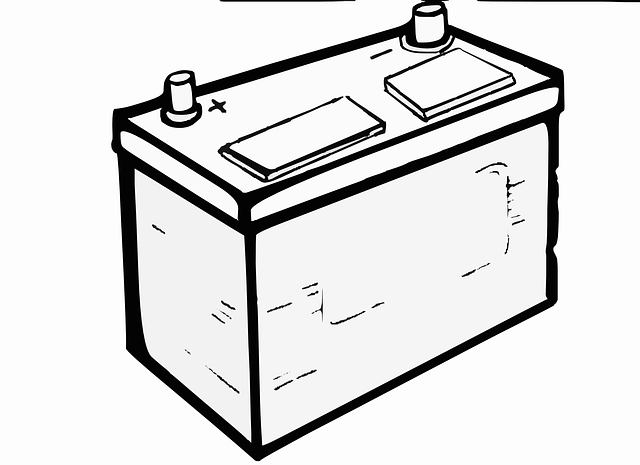We may earn money or products from the companies or products mentioned or linked to in this post.
Last week I talked about Water powered generators for homes, if you haven’t yet, go check it out! It was originally going to be the last part to this series, but I decided to go ahead and add another part to talk about some of the different batteries for off grid power, whether that is solar, wind, or hydro. In How to build your own solar power system I mentioned that Golf cart batteries were the best, I have used them before and it worked out good for me. But upon further research, I discovered that there are some better option’s out there that I have not personally used, quite frankly because I wasn’t aware of them when I was playing around with Solar energy when I was still in High School.
What are the 3 best battery type’s for energy storage?
Flooded Lead Acid batteries, these have been used for a long time. They are still cheaper up front compared to the other type’s out there, but saving a few buck’s now could cost you in the long run. If used properly and not discharged too low, then these can last you around 5 to 6 year’s. These batteries can be discharged down to 80%, but if you want to maximize the life span, I wouldn’t discharge more than 50%.
Nickel Iron batteries can last 25+ years and can be discharged 80% daily. They aren’t maintenance free though. You will need to add distilled water every 6 to 8 week’s and they need an electrolyte refresh every 8 to 10 years. They also need to be stored in a well ventilated area because they do produce some hydrogen gas.
Lithium Ion batteries. The term Lithium Ion or Li-Ion, is an umbrella term. There are different chemistries of the Lithium batteries, but they are usually grouped together when people talk about Lithium Ion Batteries. You have Cobalt Oxide, Manganese Oxide, Nickel Manganese Cobalt Oxide, Iron Phosphate, Nickel Cobalt Aluminum Oxide and Titanate.
The best Li-Ion battery to use for Renewable Energy storage would have to be the Lithium Iron Phosphate or LFP. Although the Li-Ion Batteries have gotten bad press for exploding and catching fire, the LFP is very stable and maintenance free. With these you can discharge the battery 80% everyday. They will usually last you 15+ years.
How much would it cost me?
Well, that all depends on how much energy you use, in order to figure up how much energy you will need, check out Alternative power for the home. If you have a 12V, 24V or 48V system, the cost will fluctuate.
Since we know that with a FLA battery you can discharge it 50%, with the Nickel Iron and Lithium Iron Phosphate batteries you can discharge them 80%, you will need to determine how much energy you will use every day and how many batteries you would need in order to not over discharge your battery bank.
Remember that you will not always have wind or sun shine to be able to recharge your battery bank every day. So unless you want to also have a Generator, you will need to size your battery bank to last 2 to 3 day’s without the ability to recharge. That will also affect the cost as you might need more batteries or less batteries if you plan on using a generator.
The cost per battery will vary from vendor to vendor, as well as difference in shipping cost’s. Unless you have a battery distributor near you to where you can just pick them up yourself, the shipping cost’s will not be cheap.
How do I determine how much energy I need to store?
Here’s a table that you could use:
3 40W light bulbs on for 3 hours per day = 240WH
2 30W TV’s on for 3 hours a Day = 180WH
1 30W Water pump on an hour per day = 30WH
1 40W refrigerator on for 12 hours a day = 480WH
1 5W phone charger for 3 hours per day = 15WH
That will give you a total of = 945WH
Now let’s look at storage capacity per battery:
AH X Voltage = WH
So for a 22AH 12V battery you’ll take 22AH X 12V = 264WH
For a 22AH 24V battery you’ll take 22AH X 24V = 528WH
So to store 945WH you would need to determine what battery bank you will go with and also remember that with FLA batteries you can only discharge them 50% but with Lithium Iron Phosphate and Nickel Iron batteries, you can discharge then 80%.
So if you have a 22AH 12V battery bank you will need around 7 to 8 batteries. If you have a 22AH 24V batter bank, you will need around 4 batteries. This is with the FLA. Also remember that this is only for 1 day, so if you go 3 day’s without being able to charge your battery bank, you wont have power after the first day.
If you go with the Nickel Iron, or Lithium Iron Phosphate battery bank’s, you will use the same method 22AH 12V = 264WH so you would only need 4 to 5 batteries per day. Also remember that battery specification’s change from battery to battery, so you might only need 1 or 2 or 5 to 8 batteries. It all depends on how much energy you plan on using per day.
You will need to keep in mind that you might want to be able to go a few day’s without being able to recharge your battery bank. You will also need to figure in the amount of time per day that you will actually be able to charge you battery bank. If you are using solar and only have around 4 to 6 or 5 to 8 hour’s a day of charging time, then you will also need to consider having the amount of solar panel’s to fully recharge your system in that time.
Wind is much harder to predict, so you will also need to keep that in mind. If you use as a micro-hydro power system then you can make your calculations fairly simple. If the water is always flowing, which it almost always should be, then you will constantly be getting energy to store.
Next week I will go over what a Solar flare does and how a CME (Coronal Mass Ejection) are different, but still pose a pretty high threat. Then week after that, I will explain how the nation would be different in the event that we have a nationwide power grid failure.
It is crazy how much we are dependent on electricity, I’m not saying it isn’t nice, but we as a nation have gotten to where we are so dependent on the power making our lives so much easier. I’ll go over how the die off work’s and the estimated time line of event’s.

